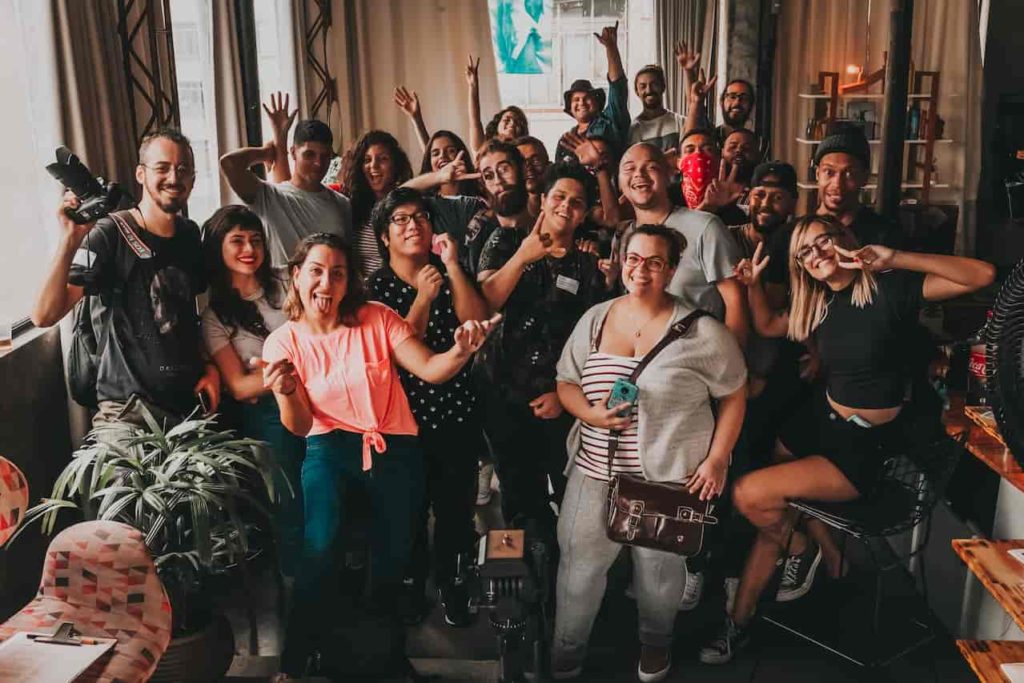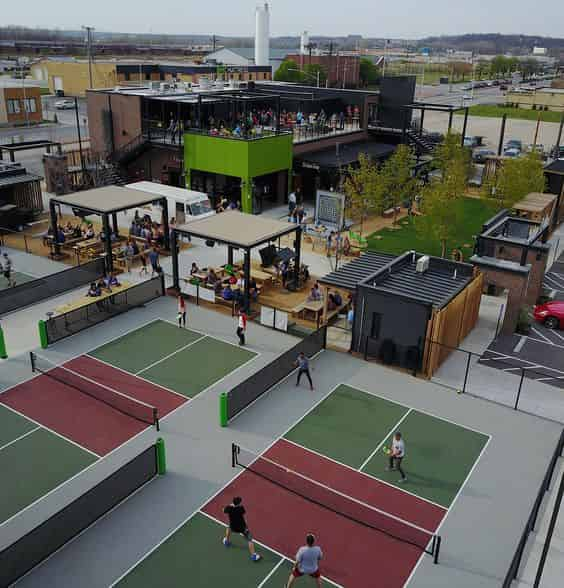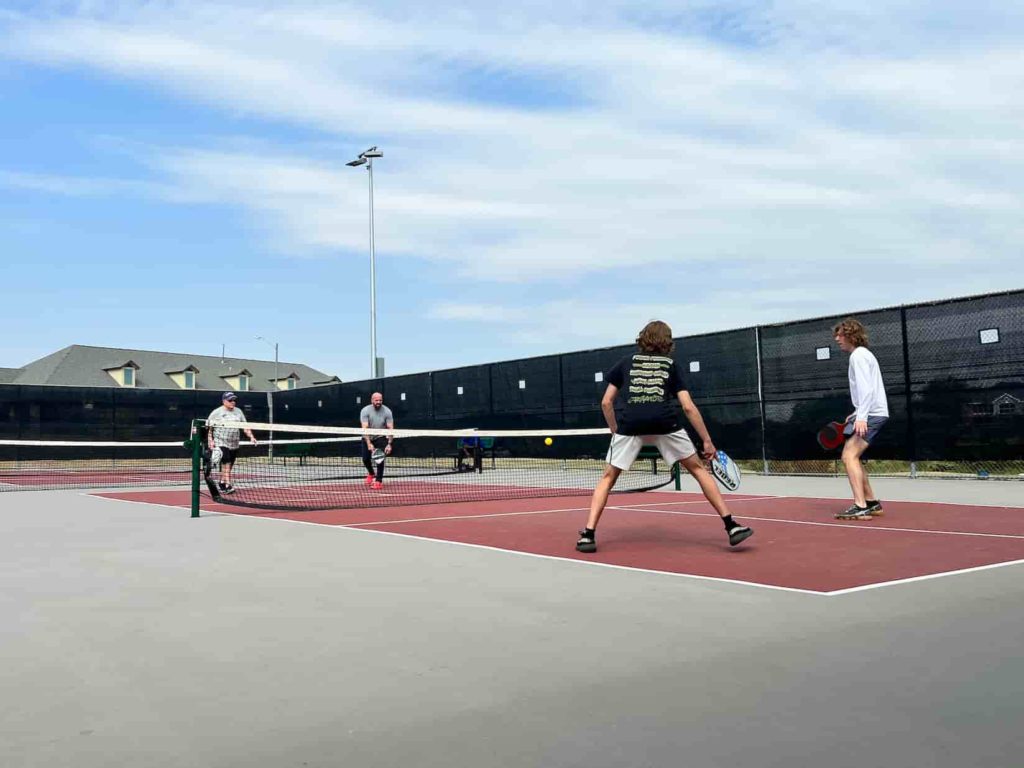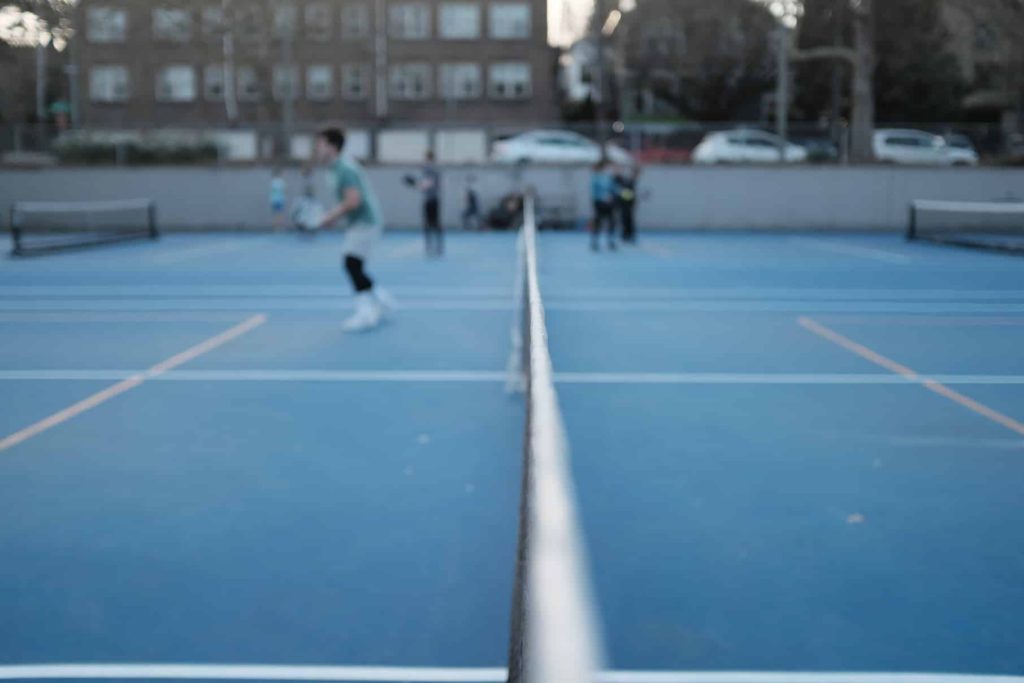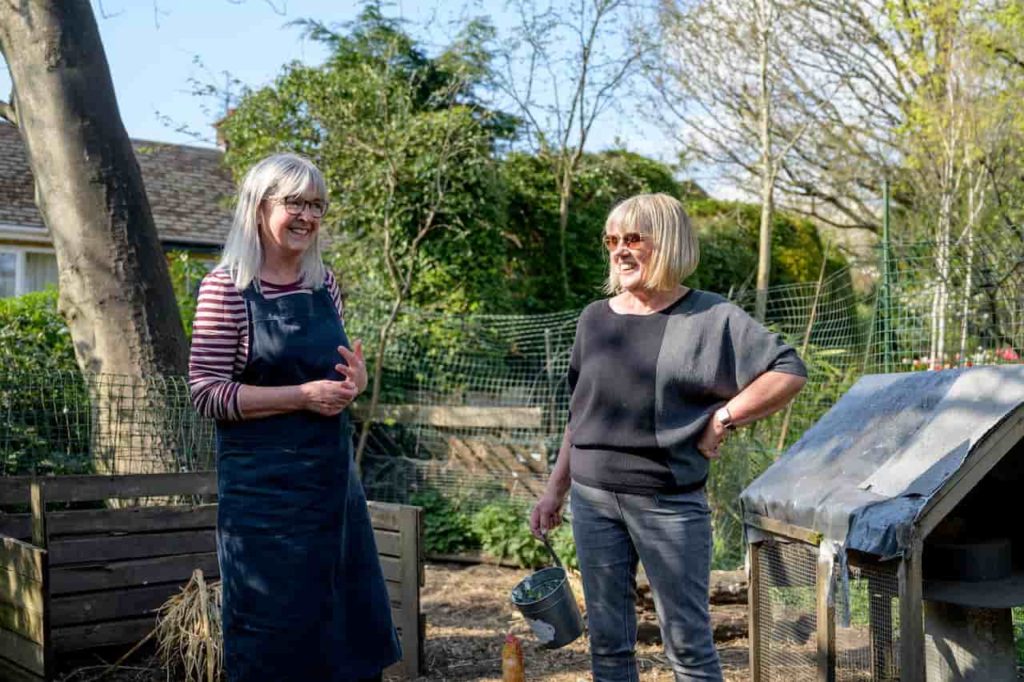Building a Strong Pickleball Community
Dive into the exhilarating world of pickleball and discover how it’s not just about mastering the serve or backhand, but it’s the power of community that truly makes the game special. This article will lead you through a step-by-step process on how to build a dynamic pickleball community; a gathering place for passionate players, a supportive network to enhance your skills, and a vibrant social hub that forms friendships extending beyond the court lines. Whether you’re a seasoned pro or a curious beginner, there’s a spot on the court waiting for you, and a thriving pickleball community ready to welcome you into the fold. Ready to serve up some fun? Let’s get started!
The Rise of Pickleball
Pickleball was invented in 1965 by Joel Pritchard, Bill Bell, and Barney McCallum on Bainbridge Island near Seattle. The three men were looking for an activity that could keep their families entertained during the summer months when they stumbled upon this innovative new sport.
Since then, pickleball has grown from a backyard game to one that attracts millions of players worldwide. One reason why pickleball has become so popular over recent years is because it appeals to such a broad demographic range.
Young children can play with grandparents because there’s less physical demand compared to other racket sports like tennis or badminton. It’s also reasonably inexpensive equipment-wise which allows people from all economic backgrounds access without breaking their wallet.
The Importance of Building a Pickleball Community
Building a strong community around pickleball is crucial because it provides players with a support system that can help them improve their skills and increase their enjoyment of the game. Having a group of people to play with regularly also makes it more likely for players to stick with the sport over time, leading to better health outcomes overall.
A pickleball community can also serve as an essential social support network, providing players with opportunities to develop new friendships and connect with others who share their passion for the game. Through regular play and competition, community members can challenge themselves and grow while building lasting relationships both on and off the court.
Overall, building a strong pickleball community is crucial for both experienced players and those just starting. By connecting with other players, improving skills through friendly competition, and fostering meaningful relationships within the community, you are sure to get more out of your pickleball experience.
Identify Potential Players
Research Local Clubs, Leagues, and Organizations That Already Exist in Your Area
If you’re looking to build a pickleball community, the first step is to identify potential players. One way to do this is by researching local clubs, leagues, and organizations that already exist in your area.
This can help you get a sense of the existing pickleball scene and connect with people who are already passionate about the sport. Start by searching online for local pickleball clubs or leagues.
You can also check out community centers or recreational facilities in your area that may offer pickleball programs. Reach out to these groups to get information on upcoming events or tournaments, and consider attending them to meet other players in person.
Reach Out to Friends, Family, and Acquaintances
Another way to identify potential players is by reaching out to friends, family members, and acquaintances who may be interested in playing pickleball. If you have a network of people who are already interested in sports or fitness activities, chances are some of them will be open to trying something new like pickleball.
Send an email or message inviting people over for a game of pickleball at a local court or set up a time for them to come over if you have a net available. Be sure to emphasize how fun and accessible the sport is for all ages and skill levels.
Utilize Social Media Platforms to Connect With Potential Players
In today’s digital age, social media platforms can be powerful tools for building communities around shared interests like sports. When it comes to building a pickleball community, social media platforms like Facebook Groups can provide an easy way for players in your area – both newcomers and established players – to connect with one another. Create posts introducing yourself as a pickleball enthusiast and inviting others to join your community.
Share photos, videos and articles about relevant topics and local events. Encourage existing members to invite their friends, family and co-workers who may be interested in learning more about the sport.
By utilizing several strategies, you can easily identify potential players who share a passion for pickleball. These individuals will help form the foundation of your community, making it easier to grow and foster a thriving group of enthusiasts.
Establish a Regular Playing Schedule
Determine the Best Days and Times for Players to Meet Up
One of the most crucial aspects of building a successful pickleball community is establishing a regular playing schedule. To do this effectively, you need to determine the best days and times for players to meet up and play together.
The ideal playing schedule will vary depending on your location, weather patterns, and the availability of players. Consider surveying potential members to find out what days and times work best for them.
You can use online tools like Doodle or Survey Monkey to collect their input. Once you’ve gathered feedback from your potential members, analyze the data to determine the optimal playing schedule.
Be flexible in scheduling games so that everyone has ample opportunity to play at convenient times. Remember that scheduling around holidays, weekends or after work hours generally works best for most people.
Create a Schedule that Accommodates Different Skill Levels and Availability
When creating a playing schedule consider the different skill levels of potential members when assigning days and time slots for games or practices. For example, setting aside one day per week specifically for beginners will encourage new players to join your community without feeling overwhelmed by highly skilled players.
In addition, accommodate various availability schedules by organizing games that last an hour instead of half-day events which makes it easier for people with busy schedules (and families) who only have limited time available to participate in their sport. Keep in mind too that not all players want competitive play all the time; some just want some social interaction while enjoying light exercise so mix up activities on different days: socials one week, drills another week followed by games on another day.
Consider Hosting Regular Events or Tournaments to Keep Players Engaged
Hosting regular events is an excellent way to keep players engaged with your community as well as attract new members. Consider organizing an annual tournament or weekly round-robin games that appeals to all skill levels.
Round robins are a great way to integrate the newer players into playing with more experienced ones, while also creating a social atmosphere. Another great way of keeping your pickleball community engaged is by organizing clinics or workshops led by professional players and coaches.
These events are not only fun but provide opportunities to learn valuable techniques, improve skills and add variety to your overall play style. Establishing a regular playing schedule is crucial when building a thriving pickleball community.
Ensure you create a flexible schedule that accommodates different skill levels and availability among your potential members. Hosting events like tournaments, clinics, or workshops will keep the community active and engaged while also promoting growth through word-of-mouth invitations from satisfied participants!
Find a Suitable Location
Identify Available Outdoor or Indoor Courts in Your Area
One of the first things you need to do when building your pickleball community is to identify available courts in your area. You can start by searching online for public courts such as parks, schools, and community centers or by simply driving around your town.
Make a list of all the courts you find and note their location, condition, and accessibility. If you are having trouble finding outdoor courts near you, consider reaching out to local tennis clubs or sports organizations. (you can easily turn a tennis court into a pickleball court)
They may have additional information about available courts or even be interested in partnering with your group to promote the game. Once you have identified outdoor courts in your area, it’s important to also consider indoor court options.
Indoor facilities are ideal for year-round play or during inclement weather. Check with local gyms or recreation centers that offer basketball or volleyball courts as they may also have lines painted for pickleball.
Check With Local Parks and Recreation Departments for Court Availability
Many parks and recreation departments offer public court facilities that can be reserved for free or at a low cost. Contact your local department to inquire about court availability and any reservation requirements. Be sure to ask if there are any restrictions such as hours of operation, rules regarding lighting (if playing at night), or limitations on noise levels.
In addition to outdoor public facilities, many cities also have indoor community centers that rent their gymnasiums at affordable rates. Depending on the size of your group, this option might be more cost-effective than renting from a private gym.
Consider Renting Space from Clubs or Gyms
If outdoor public facilities aren’t an option due to weather conditions or lack of availability, consider renting space from community centers or gyms. While this may come with a higher cost compared to public facilities, it offers the benefit of year-round play.
When looking for rental options, consider the size of the space needed for your group and any additional amenities such as restrooms, locker rooms, or storage. Also, be sure to negotiate a fair price and establish clear rental terms and agreements to avoid any misunderstandings in the future.
By following these steps, you can successfully find a suitable location for your pickleball community to meet and play. Remember that it’s important to prioritize accessibility, affordability, and comfort when selecting a court facility.
Promote Your Community
Using Social Media to Promote Your Group
Social media has become a powerful tool for promoting anything and everything, including pickleball communities. Whether it’s Facebook, Twitter, Instagram or TikTok, social media can help you reach out to a large audience and spread the word about your pickleball community.
You can create a Facebook page for your group where members can interact, share updates and encourage others to join. Make sure you post regularly about upcoming events, new members or anything noteworthy that’s happening in the community.
Share photos of games in progress or highlight members who are doing well in competitions. Consider creating a hashtag that represents your group or event.
This way people can easily find posts related to your community or event by searching for the specific hashtag on social media platforms. You can also consider partnering with local influencers who have a significant following on social media to help promote your pickleball community.
Go Old School: Create Flyers and Posters
In addition to utilizing social media platforms, it’s important to use traditional advertising methods as well. Flyers and posters are great ways of spreading information about an event or group throughout a specific area.
Create eye-catching flyers with concise yet informative content that highlights what makes your pickleball community unique. Include details such as location & time of play depending on if you have a regular schedule and any special events you’re hosting in the near future – e.g., tournaments.
Distribute these flyers at local businesses such as sports equipment stores or gyms where potential players may frequent. Consider placing them in high traffic areas like parks where people are likely to gather.
Encourage Current Members to Invite Friends and Family
Word of mouth is one of the most powerful forms of advertising there is! Encourage your current members to invite friends and family who may be interested in playing pickleball.
This not only increases your numbers but also helps to create a sense of community within the group. To make it easier, consider hosting a “bring-a-friend” day where each member is encouraged to bring someone new to play.
Make sure you have enough paddles and balls for everyone to use and that the games are organized in such a way that new players don’t feel overwhelmed. You can also provide some basic tips on how to play the game.
Offer incentives, such as discounts on membership fees or free equipment for those who bring in new members. This will give them an extra push to help spread the word about your community.
Foster a Positive Community Culture
Encourage Friendly Competition While Maintaining Sportsmanship
One of the great things about pickleball is its ability to bring people together and foster a sense of community. However, competition can also bring out negative behaviors such as trash talking, cheating, and unsportsmanlike conduct. As a community leader, it’s important to promote healthy competition and good sportsmanship among your members. Set a good example for others, especially for new players who don’t know what is appropriate court etiquette.
Encouraging friendly competition can be done by organizing events that match players with similar skill levels. You can also create a points system or rankings that motivate players to improve and challenge themselves.
It’s important to emphasize that winning is not the only goal; rather, it’s about enjoying the game and improving as a player. Maintaining sportsmanship means adhering to basic ethical principles such as honesty, respect for opponents, and graciousness in both winning and losing.
Encourage your members to shake hands or fist bump after each game regardless of the outcome. Provide reminders about proper etiquette such as calling out the score clearly or giving opponents time to retrieve errant balls.
Create Opportunities for Social Interaction
Building a strong community culture requires more than just playing pickleball together; it also involves creating opportunities for social interaction outside of the court. Consider organizing social events like potlucks or happy hours where players can get to know each other in a relaxed setting. Encourage members to share their personal interests or hobbies with each other.
Another idea is to use pickleball events as an opportunity for giving back to the community through charity tournaments or volunteering at local events together. This not only strengthens bonds within your group but shows others how impactful pickleball can be beyond just playing on the court.
Conclusion
Building a thriving pickleball community takes time, effort, and dedication from everyone involved. By identifying potential players, establishing regular playing schedules, finding a suitable location, promoting your community, and fostering a positive culture of friendly competition and good sportsmanship, you can create an environment where players of all skill levels feel welcome and supported. Remember to stay open to feedback from your members and be willing to make changes as needed.
Keep your focus on the overarching goal of helping people connect through pickleball while having fun and improving their skills. With commitment and enthusiasm, your pickleball community can become an enduring source of camaraderie, growth, and enjoyment for years to come.

